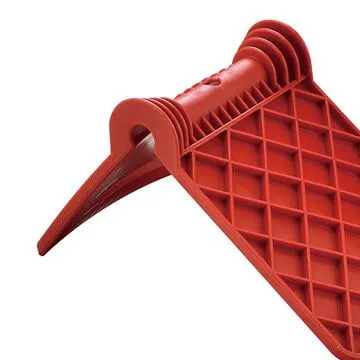- Afrikaans
- Albanian
- Amharic
- Arabic
- Armenian
- Azerbaijani
- Basque
- Belarusian
- Bengali
- Bosnian
- Bulgarian
- Catalan
- Cebuano
- Corsican
- Croatian
- Czech
- Danish
- Dutch
- English
- Esperanto
- Estonian
- French
- German
- Greek
- Hindi
- Indonesian
- irish
- Italian
- Japanese
- Korean
- Lao
- Malay
- Myanmar
- Norwegian
- Norwegian
- Polish
- Portuguese
- Romanian
- Russian
- Serbian
- Spanish
- Swedish
- Thai
- Turkish
- Ukrainian
- Uzbek
- Vietnamese
авг. . 13, 2024 07:30 Back to list
Exploring the Benefits of Suspended Ceiling Tees for Modern Interior Design Solutions
The Versatility and Importance of Suspended Ceiling Tees
Suspended ceiling tees, often referred to as T-bars or grid systems, play a crucial role in modern construction and interior design. These structural components form the framework for suspended ceilings, effectively creating an aesthetically pleasing and functional ceiling space that conceals utilities, enhances acoustics, and improves overall building performance.
What are Suspended Ceiling Tees?
Suspended ceiling tees are T-shaped metal or PVC strips that are installed in a grid pattern to support a ceiling system. They are typically made from materials like steel, which provides durability and strength, or lightweight PVC, which is resistant to moisture and corrosion. The grid system consists of main tees that run the length of the room and cross tees that intersect them, creating a series of squares or rectangles where ceiling tiles or panels can be fitted.
Benefits of Suspended Ceiling Tees
1. Aesthetic Appeal One of the primary reasons for using suspended ceiling tees is the visual appeal they bring to a space. These ceilings can be designed to accommodate various tile finishes, colors, and textures, allowing for creative expression in commercial, office, and residential environments.
2. Concealment of Utilities Suspended ceilings provide an efficient way to hide the unsightly mechanical systems such as air conditioning ducts, plumbing, and electrical wiring. This not only enhances the visual quality of a space but also protects these utilities from damage and facilitates easier maintenance when repairs are needed.
3. Acoustic Performance Many suspended ceiling tiles are designed to absorb sound, making them an ideal solution for spaces that require acoustic control, such as auditoriums, conference rooms, and classrooms. The grid system helps to reduce noise levels by minimizing sound transmission between spaces.
suspended ceiling tees

4. Fire Safety Certain suspended ceiling systems are designed with fire-resistant materials, contributing to building safety. In the event of a fire, these ceilings can help contain flames and prevent the spread of smoke, providing crucial time for evacuation.
5. Flexibility and Accessibility One of the significant advantages of suspended ceilings is their flexibility. They can be installed in various configurations, accommodating different room shapes and sizes. Additionally, access panels can be incorporated into the design, allowing maintenance personnel to reach above-ceiling utilities without disrupting the entire ceiling system.
Applications of Suspended Ceiling Tees
Suspended ceiling tees are widely used in various settings, including
- Commercial Offices In office spaces, suspended ceilings provide a professional look while improving acoustic qualities and lighting performance. - Educational Institutions Schools and universities benefit from suspended ceilings as they provide a conducive learning environment by minimizing distractions and controlling noise levels. - Healthcare Facilities Hospitals and clinics utilize suspended ceilings to create sterile environments that are easier to clean and maintain while concealing crucial infrastructure.
- Retail Spaces Malls and shops often implement suspended ceilings to highlight merchandise and provide a visually appealing shopping atmosphere.
Conclusion
In summary, suspended ceiling tees are an integral part of contemporary building designs, offering versatility, aesthetic enhancement, and practical benefits for a variety of applications. Their ability to conceal utilities, improve acoustics, and contribute to fire safety makes them essential in many commercial and residential projects. As design trends evolve, suspended ceiling systems will continue to play a vital role in shaping the interior environments we inhabit. Whether in a bustling office or a serene classroom, the impact of suspended ceiling tees is both significant and lasting.
-
Transform Interiors with PVC Gypsum Ceiling: A Stylish, Durable, and Moisture-Resistant SolutionNewsMay.19,2025
-
The Smart Interior Upgrade: Discover the Durability and Versatility of Gypsum Ceiling Access Panel SolutionsNewsMay.19,2025
-
The Smart Choice for Interior Design: Discover the Value of PVC Gypsum Ceiling SolutionsNewsMay.19,2025
-
Mineral Fiber Ceiling Tiles: The Smart Blend of Performance and AestheticsNewsMay.19,2025
-
Mineral Fiber Ceiling Tiles: The Superior Choice Over Gypsum for Sound and Fire SafetyNewsMay.19,2025
-
Mineral Fiber Ceiling Tiles: Eco-Friendly Strength and Style for Every CeilingNewsMay.19,2025







